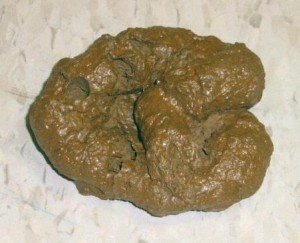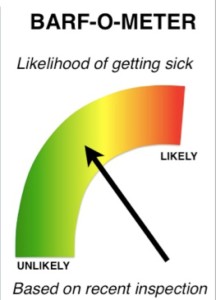It’s bad enough that public institutions like Kansas State University use public funds to promote crap.
As a parent of four university daughters, I’ve seen the debt they’ve accumulated and the crap they’ve been sold.
 But it’s bigger than public institutions – the foundations of science are for sale, to the highest bidder.
But it’s bigger than public institutions – the foundations of science are for sale, to the highest bidder.
I tend to be the reviewer journal editors go to when they sense crap – I have a ridiculously large rejection rate because I know bullshit when I read it.
Tom Spears of the Ottawa Citizen says he’s just written the world’s worst science research paper: More than incompetent, it’s a mess of plagiarism and meaningless garble.
Now science publishers around the world are clamouring to publish it.
They will distribute it globally and pretend it is real research, for a fee.
It’s untrue? And parts are plagiarized? They’re fine with that.
Welcome to the world of science scams, a fast-growing business that sucks money out of research, undermines genuine scientific knowledge, and provides fake credentials for the desperate.
And even veteran scientists and universities are unaware of how deep the problem runs.
When scientists make discoveries, they publish their results in academic journals. The journals review the discovery with independent experts, and if everything checks out they publish the work. This boosts the reputations, and the job prospects, of the study’s authors.
Many journals now publish only online. And some of these, nicknamed predatory journals, offer fast, cut-rate service to young researchers under pressure to publish who have trouble getting accepted by the big science journals.
In academia, there’s a debate over whether the predators are of a lower-than-desired quality. But the Citizen’s experiment indicates much more: that many are pure con artists on the same level as the Nigerian banker who wants to give you $100 million.
Last year, science writer John Bohannon sent out a paper with subtle scientific errors and showed that predatory journals were often failing to catch them. The Citizen covered his sting, published in Science magazine.
Estimates of their numbers range from hundreds to thousands.
To uncover bottom-feeding publishers, the simplest way was to submit something that absolutely shouldn’t be published by anyone, anywhere.
My short research paper may look normal to outsiders: A lot of big, scientific words with some graphs. Let’s start with the title: “Acidity and aridity: Soil inorganic carbon storage exhibits complex relationship with low-pH soils and myeloablation followed by autologous PBSC infusion.”
Look more closely. The first half is about soil science. Then halfway through it switches to medical terms, myeloablation and PBSC infusion, which relate to treatment of cancer using stem cells.
The reason: I copied and pasted one phrase from a geology paper online, and the rest from a medical one, on hematology.
I wrote the whole paper that way, copying and pasting from soil, then blood, then soil again, and so on. There are a couple of graphs from a paper about Mars. They had squiggly lines and looked cool, so I threw them in.
Footnotes came largely from a paper on wine chemistry. The finished product is completely meaningless.
The university where I claim to work doesn’t exist. Nor do the Nepean Desert or my co-author. Software that catches plagiarism identified 67 per cent of my paper as stolen (and that’s missing some). And geology and blood work don’t mix, even with my invention of seismic platelets.
I submitted the faux science to 18 journals, and waited.
Predators moved in fast. Acceptances started rolling in within 24 hours of my submission, from journals wishing to publish the work of this young geologist at the University of Ottawa-Carleton.
First came the Merit Research Journal of Agricultural Science and Soil Sciences, which claims it sent me to “peer review” by an independent expert in the field who gave me a glowing review. It laid out my article and was ready to post it online 48 hours after submission — for $500.
That’s cheap. The going rate at genuine journals is $1,000 to $5,000.
I didn’t pay.
There are seven more acceptances from the International Journal of Science and Technology, Science Journal of Agricultural Research and Management, the International Journal of Current Research, Science Park, Australian Journal of Basic and Applied Research (actually based in Jordan), American Journal of Scientific Research, and International Journal of Latest Research in Engineering and Computing. Yes, “Latest.” Makes you wonder what other kind there is.
Several others are still considering and a couple are silent and appear to have shut down.
Only two turned me down, for plagiarism. And one of these will turn a blind eye and publish anyway if I just tweak it a bit.
 The acceptances came embarrassingly fast. A real journal needs weeks at the very least to ask reviewers — outside experts — to check an author’s work.
The acceptances came embarrassingly fast. A real journal needs weeks at the very least to ask reviewers — outside experts — to check an author’s work.
I wrote back to one of these publishers explaining that my work was “bilge” and the conclusions don’t stand up.
The journal wrote right back offering to tweak a few passages and publish anyway. And by the way, it asked, where’s the $500?
At the University of Saskatchewan, medical professor Roger Pierson wonders how can scientists trust the journal system to share knowledge.
“Basically you can’t any more,” he said, except for a stable of well-known journals from identifiable professional societies, where members recognize ethical work is in all their best interests.
He had just spent time with the committee that oversees tenure and promotions at his university.
“We had three cases where people had published things in what were obviously predatory journals, and they didn’t think anything was wrong with that.
“The reality though is that these (fake journals) are used for promotion and tenure by people who really shouldn’t be there. The world is changing fast … It’s a big problem.”
And taxpayers wonder if the university system is broken.
I don’t know of a better system than vigorous and brutal peer-review, but universities are rapidly becoming redundant in their quest for meaningless metrics.
And for any university to claim they are global, geography shouldn’t be a factor.
 Many other states require this practice, which allows customers to see how a restaurant rates and forces the restaurant to work hard to maintain standards, since their scores are prominently displayed for all to see.
Many other states require this practice, which allows customers to see how a restaurant rates and forces the restaurant to work hard to maintain standards, since their scores are prominently displayed for all to see.








